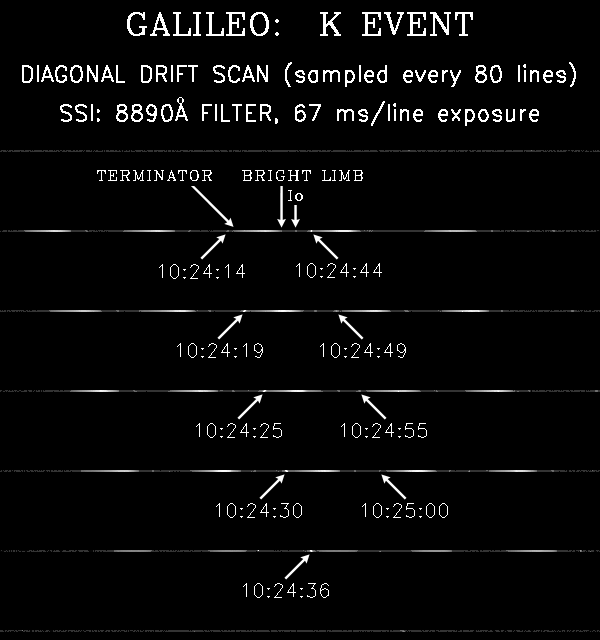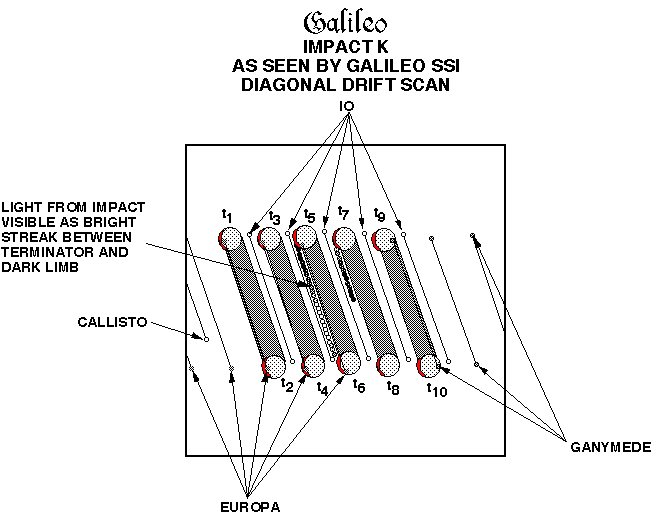


NOTE: Click on the images to view them at their highest resolution.
The first data from the solid-state imaging system on NASA's Galileo spacecraft showing the impact of a fragment of Comet Shoemaker-Levy 9 at Jupiter during July 1994 has been received from the spacecraft. The partial image of the comet fragment K impact represents the return of image search "jailbars" - groups of 2 lines every 80 lines. The wide gaps will be filled in at a later time tentatively scheduled for mid-October 1994.
The data, obtained between 10:23:10 and 10:25:37 UT on July 19, 1994 (Earth receive time), shows the entry of fragment K, which looks like a bright flare on the dark side of Jupiter (directly visible from Galileo's perspective) between the terminator and the dark limb of the planet lasting approximately 35 seconds. The flare at its brightest is about 10 percent the total brightness of Jupiter (at this phase angle = 50 degrees).
The camera resolution is about 2,500 kilometers per pixel at the viewing distance of about 1.5 astronomical units. Possible additional and phenomena are visible, but we cannot yet distinquish them clearly from cosmic ray hits; some features are Galilean satellites.
The data are not a series of snapshots of Jupiter. Rather, for purposes of increasing sensitivity and time-sampling, Jupiter was trailed in a directon roughly perpendicular to the line that connects the center of Jupiter with the impact site. The result is that Jupiter appears as a smeared (in one dimension) diagonal bar, with the limb to the right and the terminator to the left. This process was reset and repeated five times in each image frame. As a consequence time increases down the diagonal bars and to the right across the frame. Fragment K is the bright spot beyond the terminator; approximately 5.4 seconds separate the jailbar samples and 30 seconds separates each diagonal scan. The entire frame covers about 2.5 minutes of the K impact.
The Galileo imaging sytem took data on six of the impact events: fragments D, E, K, N, V and W. No useful data was obtained on impacts D and E due to a problem with ground design software which resulted in Jupiter being out of the camera field of view for most of the observation. Data on fragments N, V and W, as well as K, should have been recorded since different imaging modes were used in these cases. How much data will be returned to the ground on these events will be decided based on jail-bar searches similar to those used for fragment K and the the record of Earth-based observations. Other Galileo instruments have other impact events, including G. Preliminary data from Galileo's photopolarimeter instrument for fragments H and L have already been reported. Further samples of Galileo data for Shoemaker-Levy 9 will continue to be returned from the spacecraft for the remainder of 1994 and lasting through the end of January, 1995.